Certified Function Point Specialist
Last Update 1 day ago
Total Questions : 249
Certified Function Point Specialist is stable now with all latest exam questions are added 1 day ago. Incorporating I40-420 practice exam questions into your study plan is more than just a preparation strategy.
By familiarizing yourself with the Certified Function Point Specialist exam format, identifying knowledge gaps, applying theoretical knowledge in IFPUG practical scenarios, you are setting yourself up for success. I40-420 exam dumps provide a realistic preview, helping you to adapt your preparation strategy accordingly.
I40-420 exam questions often include scenarios and problem-solving exercises that mirror real-world challenges. Working through I40-420 dumps allows you to practice pacing yourself, ensuring that you can complete all Certified Function Point Specialist exam questions within the allotted time frame without sacrificing accuracy.
Which of the following is NOT an example of the purpose of a function point count?
Which of the following is an attribute used to represent relationships of one entity to another?
Which transactional function(s) has (have) the primary intent of presenting information to the user and must reference a data function to retrieve data or control information?
Complete the statement. Developers translate the__________ into software in order to provide a solution.
An Assets Tracking application has a batch update process. Twice a month each of the branch offices sends a transaction file to the headquarters.
Identify the functions used.
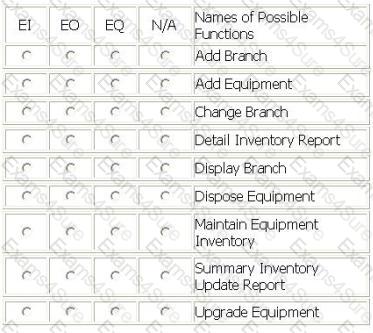
ALERT SYSTEM - ALERT NOTIFICATION
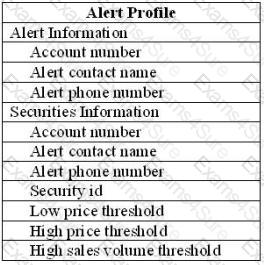
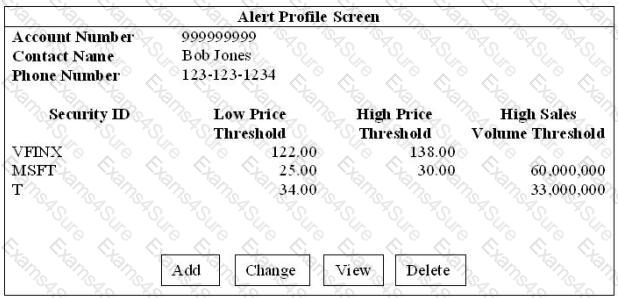
Select the complexity of each function:
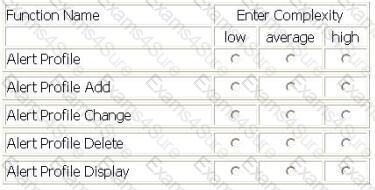
PAYROLL APPLICATION - MAINTAIN EMPLOYEE TIME SCREEN
F.
F.
F.
PAYROLL APPLICATION - EMPLOYEE PROJECT ACTIVITY REPORT
F.
The report calculates and displays both daily and weekly total hours for the current pay period.Identify the functions used.
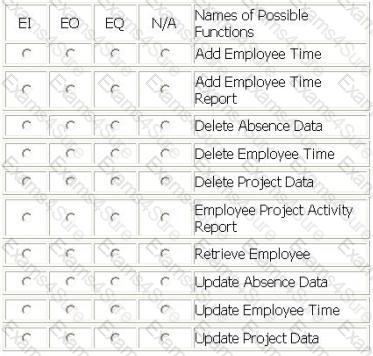
ITEM CHECK-OUT SCREEN
Identify the functions used:
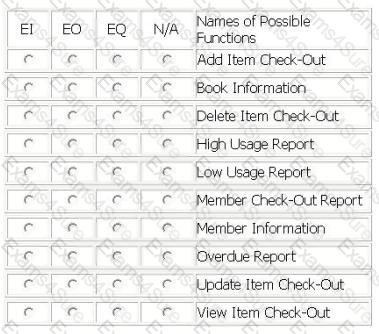
The Procurement application user requires the ability to control how and when reports are printed. The following list shows the specific user requirements for generating reports:
From the Names of Possible Functions listed identify the transactional functions for the Procurement application. Select N/A if a Name of Possible Function does not apply.
Identify the functions used:
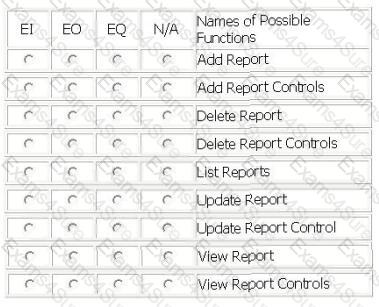
An enhancement project involves both the Human Resource (HR) application and the Mail Distribution (MD) application.
The HR application maintains all data elements in the Employee logical file. The users of the HR application require validations for employee pay grade and employee job title in the Employee logical file. The employee pay grade will be validated against the Pay Grade logical file which is maintained by the Finance application. The employee job title will be validated against the Job Title logical file which is maintained by the Compensation application.
The MD application maintains two data elements in the Employee logical file. The users of the MD application require additional validations for building and floor within the employee mailing address. The building and floor will be validated against the Building logical file which is a new file being developed by this project.
The users will use the MD application to maintain the Building logical file. The users of the MD application also maintain building and floor in the Employee logical file.
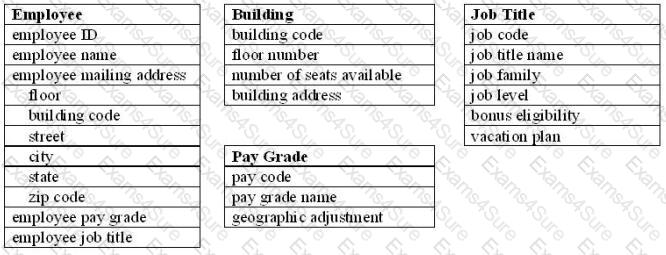
From the Names of Possible Functions listed identify the data functions for the HR application and the MD application. Select N/A if a Name of Possible Function does not apply.
Identify the data functions used:
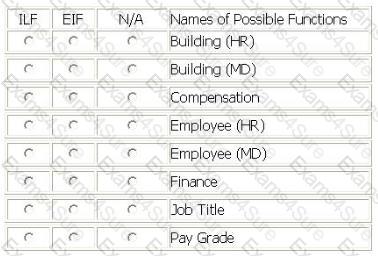
TAX APPLICATION
For the TAX application the user required the migration of existing taxpayer information (name, tax identification number, location name) to the TAX application. A conversion file with taxpayer data was created and imported into the Taxpayer logical file in the TAX application. The source of the data was the Account Holder logical file.
The user required the ability to Add, Change and Delete the taxpayer information in the Taxpayer logical file.
The user required the ability to View the taxpayer information prior to changing or deleting information.
From the Names of Possible Functions listed identify the base functional components for the TAX application baseline. Select N/A if a Name of Possible Functions does not apply.
Identify the functions used:
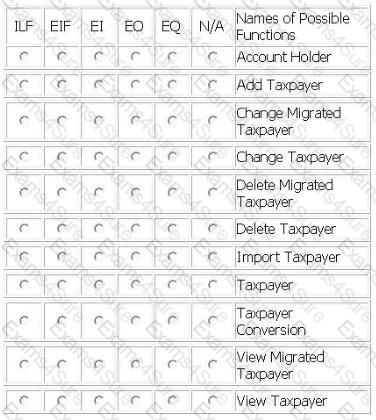
The Account Reconciliation Application (ARA) is used by banking operations to match credit (in) and debit (out) transactions within client accounts. Both credit and debit transactions are received from several other applications and stored as the Client Reconciliation logical file. ARA is capable of automatically matching transactions based on the Business Parameters logical file which is maintained by users in the AR
A.
Access permissions in the User Access logical file are maintained by users in the ARA, and contain online user account permissions and approval levels.
The users can maintain their own report forms in the Reporting logical file. All reports use the Currency logical file, which is maintained by an external application, to convert the local payment currency to Euros.
From the Names of Possible Functions listed identify the data functions for the AR
A.
Select N/A if a Name of Possible Function does not apply.Identify the functions used:
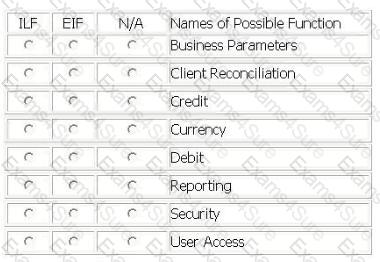
LIBRARY INFORMATION SYSTEM (LIS) - REGISTER A TEXT
Determine the complexity of the following functions:
Select the complexity for each function:
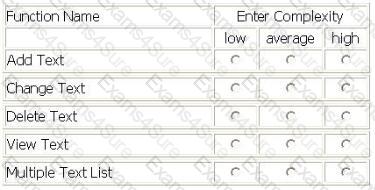
A Corporate Finance application is being developed.
The application adds or updates the Receivable logical file and the Payable logical file. The user requires that this information is sent to the Accounts application to keep accounting records consistent. The combined receivable and payable data is sent to the Accounts application daily at 8:00 PM.
When implementing a solution to send the receivable and payable information, it was decided to include a header and trailer record with the accounts information. These records are used by the Corporate Finance user to ensure that everything was technically correct when transmitting the file.
From the Names of Possible Functions listed identify the transactional functions for the Corporate Finance application. Select N/A if a Name of Possible Function does not apply.
Identify the functions used:
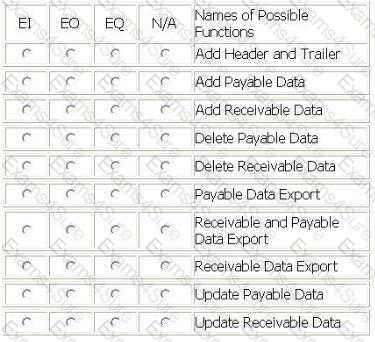
The Human Resources (HR) application includes functionality to maintain the Department logical file.
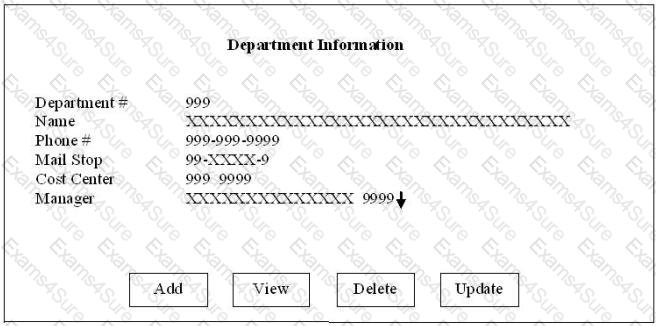
Determine the complexity for department transactions.
Select the complexity for each function.
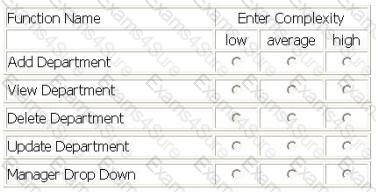
EXAM SCHEDULING APPLICATION (ESA) - EXAM SCHEDULING SCREEN
E.
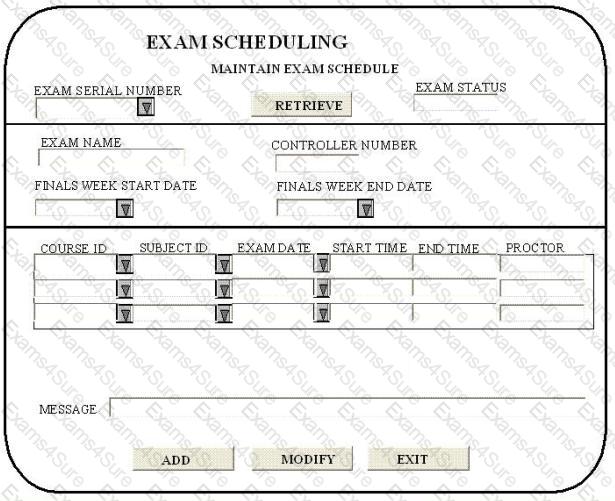
From the Names of Possible Functions listed identify the base functional components for the ESA application. Select N/A if a Name of Possible Function Type does not apply.
Identify the functions used:
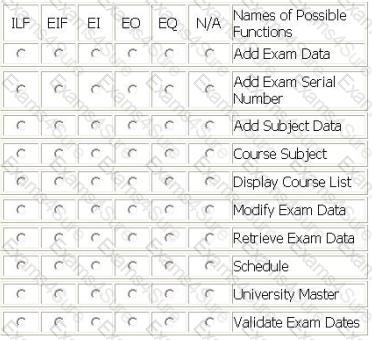
The Patient Billing application includes functionality to maintain the Patient logical file.
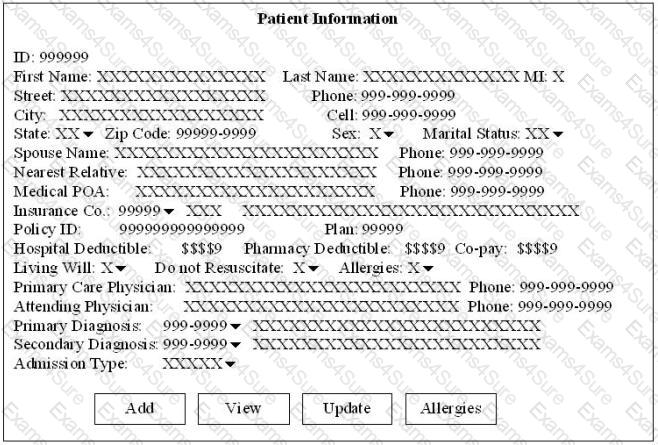
Determine the complexity for the following functions:
Select the complexity for each function:
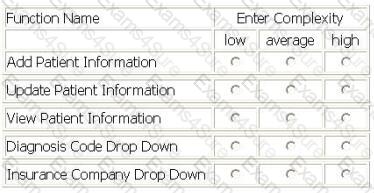
The Order Entry Modification screen populates all order details into the Order logical file. The modification process also populates the Advance Shipment Notification logical file and references the Available Inventory logical file. The user required before and after images to be captured for 3 attributes in the Oder logical file. The technical team has decided to store this data in the Order Audit file for ease of access. How many transactional functions and logical files are counted in the modification process?
A screen that adds an order record to the Order file is being enhanced to capture 10 additional attributes. These new attributes do not fit onto the existing screen, so a new screen is being created to collect the 10 new attributes before creating the Order record. How is the screen counted for the enhancement project?
An EO maintains 1 ILF and references 3 ILFs. What is the minimum number of DETs necessary for it to be valued at 7 UFP?
A logical data store is maintained by the application being counted. It has tax code as the key attribute and tax rate as the only other attribute. How would this data store be counted?
An enhancement project adds 4 new EOs, changes 4 EOs, and deletes 4 EOs. Each of the EOs has 10 DETs and references 3 EIFs. The TDI remains 31. What is the aEFP?
A transaction file that adds new employees to the Human Resources Management application is imported through a batch process from the Recruitment Management application. How many data functions are counted for the new employees transaction file in the Human Resource Management application?
What is the typical score for a batch application for the GSC Data Communications?
The application allows the user to maintain 4 error files and 4 confirmation message files to meet 4 multi-language requirements. How would these files be counted?


TESTED 07 May 2024
Hi this is Romona Kearns from Holland and I would like to tell you that I passed my exam with the use of exams4sure dumps. I got same questions in my exam that I prepared from your test engine software. I will recommend your site to all my friends for sure.
Our all material is important and it will be handy for you. If you have short time for exam so, we are sure with the use of it you will pass it easily with good marks. If you will not pass so, you could feel free to claim your refund. We will give 100% money back guarantee if our customers will not satisfy with our products.